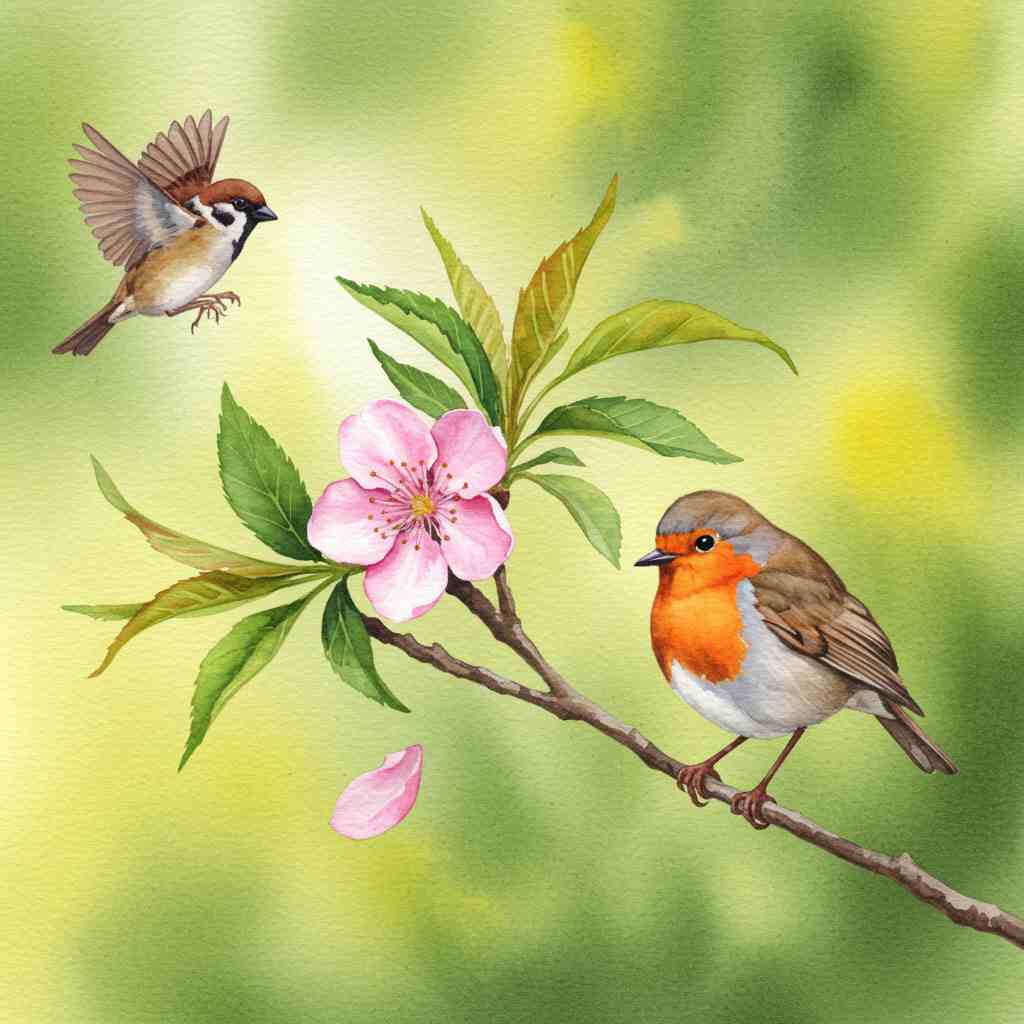The Blossom
William Blake
1757 to 1827

Merry, merry sparrow!
Under leaves so green
A happy blossom
Sees you, swift as arrow,
Seek your cradle narrow,
Near my bosom.
Pretty, pretty robin!
Under leaves so green
A happy blossom
Hears you sobbing, sobbing,
Pretty, pretty robin,
Near my bosom.
William Blake's The Blossom
William Blake's poem The Blossom is a short, lyrical piece that captures the innocence and joy of nature, while also hinting at deeper themes of life, death, and renewal. The poem is divided into two stanzas, each addressing a different bird—a sparrow and a robin—and their interactions with a "happy blossom."
Analysis:
-
Imagery and Tone:
-
The poem is filled with vibrant, natural imagery: "leaves so green," "swift as arrow," and the "happy blossom." These images evoke a sense of vitality and joy.
-
The tone is light and cheerful, with a rhythmic, almost sing-song quality, especially with the repetition of words like "merry, merry" and "pretty, pretty."
-
-
Symbolism:
-
The "happy blossom" can be seen as a symbol of life, beauty, and the cyclical nature of existence. It observes the birds, suggesting a connection between the plant and animal worlds.
-
The sparrow, described as "swift as arrow," represents energy and movement, while the robin, "sobbing, sobbing," introduces a note of melancholy or vulnerability. This contrast may reflect the dualities of life—joy and sorrow, life and death.
-
-
Themes:
-
Nature and Innocence: The poem celebrates the simplicity and purity of the natural world, focusing on the beauty of small creatures and plants.
-
Life and Death: The sobbing robin introduces a subtle hint of sadness or mortality, contrasting with the merry sparrow. This duality suggests the interconnectedness of joy and sorrow in life.
-
Connection and Comfort: The repeated phrase "near my bosom" implies a sense of closeness and comfort, as if the speaker is offering shelter or solace to the birds, and perhaps by extension, to the reader.
-
-
Structure and Rhythm:
-
The poem's structure is simple and repetitive, with a rhythmic pattern that mirrors the gentle, flowing movements of nature. The short lines and frequent repetitions create a soothing, almost lullaby-like effect.
-
Interpretation:
Blake's The Blossom can be read as a meditation on the beauty and fragility of life. The "happy blossom" serves as a silent observer, witnessing the contrasting emotions of the sparrow and the robin. The poem suggests that life is a blend of joy and sorrow, and that both are natural and interconnected. The final image of the birds near the speaker's bosom evokes a sense of warmth and protection, as if the speaker is offering comfort in the face of life's inevitable struggles.
Overall, the poem is a delicate and evocative reflection on the cycles of nature and the human experience, capturing both the lightness and the depth of existence in just a few lines.
Create a Cloze Exercise
Click the button below to print a cloze exercise of the poem critique. This exercise is designed for classroom use.
